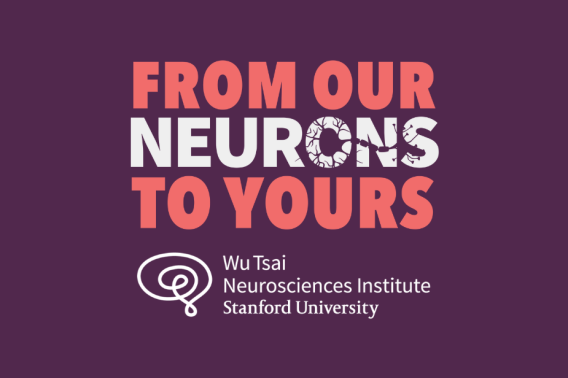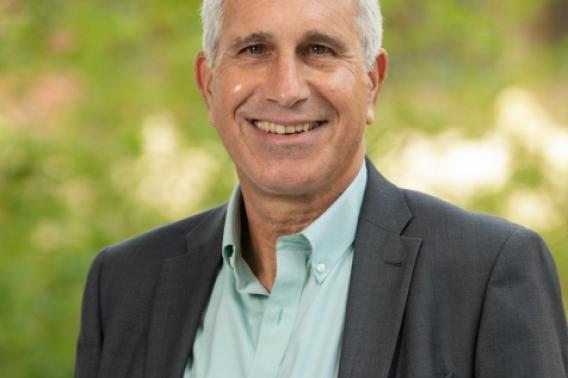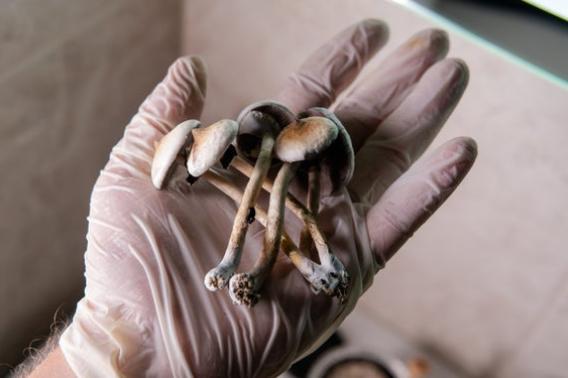The rebirth of psychedelic medicine
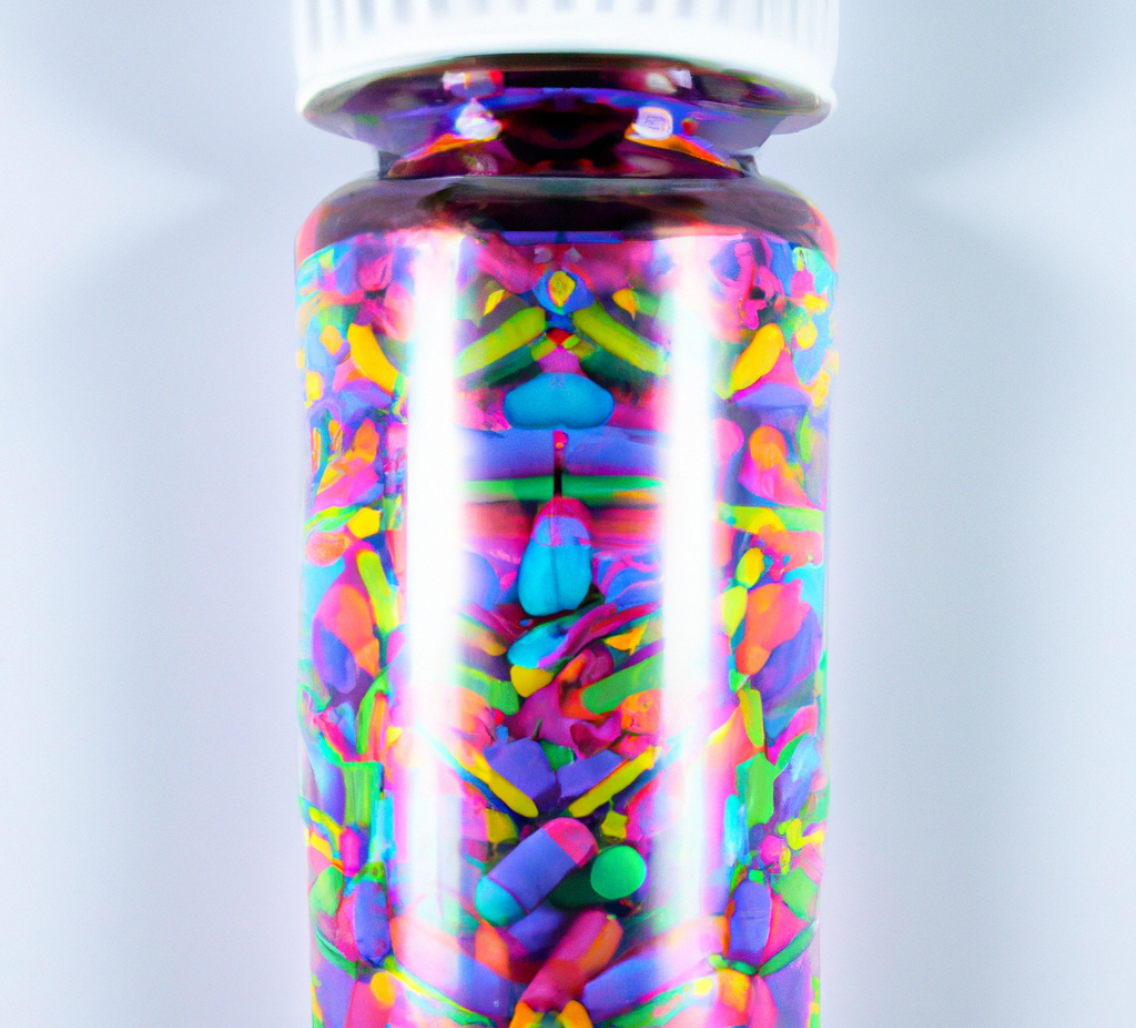
It was 1985 and John Lawn had seen enough.
In Boston nightclubs and Dallas bars, MDMA — better known by its street name, ecstasy — had become an enormously popular recreational drug. It had also terrified the Reagan administration, which was in the midst of its historic War on Drugs.
Lawn, the administrator of the Drug Enforcement Administration at the time, acted quickly. Despite the outcry of medical professionals pointing to the range of MDMA’s clinical uses, Lawn classified the drug as Schedule 1, one of many to be banned in a backlash against psychedelics like LSD and psilocybin. The message was clear: these drugs were dangerous, immoral, and medically useless.
Nearly four decades later, researchers at Stanford’s Wu Tsai Neurosciences Institute are at the forefront of a seismic shift that’s putting a spotlight on a once taboo field. Scientists are starting to take seriously what Lawn’s DEA long ago dismissed: that the mind-expanding properties of these demonized “party drugs” might be clinically valuable after all.
It’s an exciting time for a reborn field. Early clinical trials suggest MDMA may help patients with PTSD confront their traumatic memories. In other early studies, ketamine has reduced suicidal thoughts and other symptoms in patients with clinical depression. Psilocybin too may be able to help people with intractable depression, decreasing symptoms in some patients for a year or more, though the data here are still limited. And many other studies and trials are ongoing in the field.
This recent pivot toward psychedelic drugs has been described by some as a “psychedelic revolution” in psychiatry, if not a “miracle cure” for mental health disorders in general. But many of the basic mechanisms of these drugs remain poorly understood, in a field of medicine that has barely begun to recover from decades of government-enforced stigmatization.
“There are a lot of questions that need answering,” said Robert Malenka, the Pritzker Professor of Psychiatry and Behavioral Sciences at Stanford and a Wu Tsai Neurosciences Institute deputy director, who studies the mechanisms that drive MDMA’s therapeutic properties. “We’re still concerned about the evidence that these drugs will be therapeutically useful — and if they are, how to best use them therapeutically.”
Partly because of these big unknowns, psychedelic medicine has struggled to shake off the same fears first expressed by Lawn’s DEA. For some potentially addictive compounds like MDMA, abuse potential remains a charged question, and broader ethical concerns surrounding the vulnerable state that many psychedelics produce remain at play for other substances.
To pull this 1960s-era field into the present, psychedelic researchers are going back to basics. They’re working to untangle the mechanisms behind these drugs’ properties — from their therapeutic effects to their abuse potential. By understanding how these drugs work, researchers hope to design better and safer treatments that come with all the benefits of psychedelics, and few of the downsides.
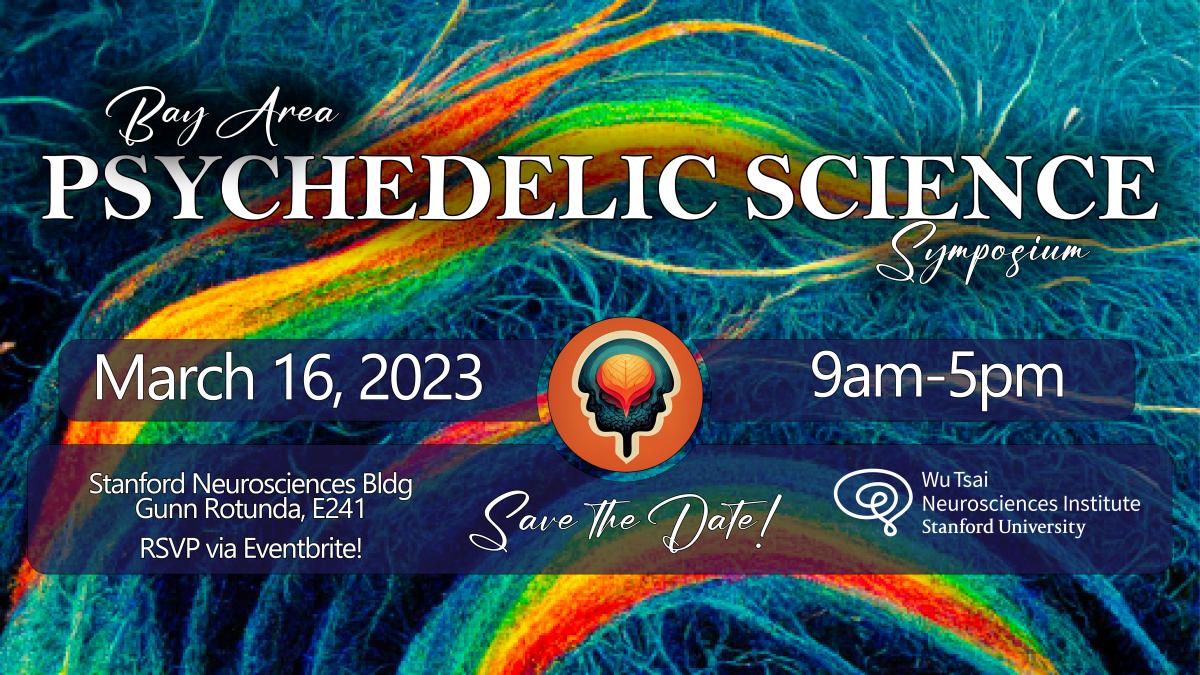
The Wu Tsai Neurosciences Institute will host the Bay Area Psychedelic Science Symposium at Stanford on March 16, 2023.
Registration now open.
The wild world of psychedelics
Warped colors and fantastical images are familiar hallmarks of “classical” psychedelics, including hallucinogens like LSD and psilocybin. But the new “psychedelic revolution” actually involves several different families of drugs — some of which, like MDMA and ketamine, are not technically psychedelics at all.
MDMA is an example of an entactogen, a batch of compounds that alter social perceptions and amplify empathy. Take one of these drugs, and you’ll start feeling more connected to those around you, whether it be your fellow partygoers, your therapist, or even your significant other, as some therapists have found helpful in bridging fractured relationships.
Meanwhile, ketamine is an example of a dissociative anesthetic, which acts by distancing users from reality. Such drugs can place patients in a dream-like state of sensory deprivation where even your sense of self fades away.
For researchers, the goal is to understand — from a mechanistic standpoint — why only certain drugs work for some disorders and not for others, isolate those effective drug mechanisms, and focus research efforts around those mechanisms to develop far more targeted, disorder-specific treatments. Scientists are now beginning to tease out the brain mechanisms behind the distinctive mind-altering properties of these different drug families, a critical step in turning them into mainstream treatments.
Classic psychedelics seem to work by binding to the serotonin 2a receptor, one of the 15 specialized receptor molecules the serotonin system uses to coordinate brain activity. Entactogens and dissociative anesthetics don’t directly act on this receptor, which is why they “feel” different from hallucinogens. Research into these compounds is even murkier: while early studies into MDMA have implicated serotonin in the drug’s effects, it’s only one chemical in a mixed bag of neurotransmitters and hormones. Meanwhile, ketamine has been tenuously linked to a specific receptor in the brain’s glutamate system.
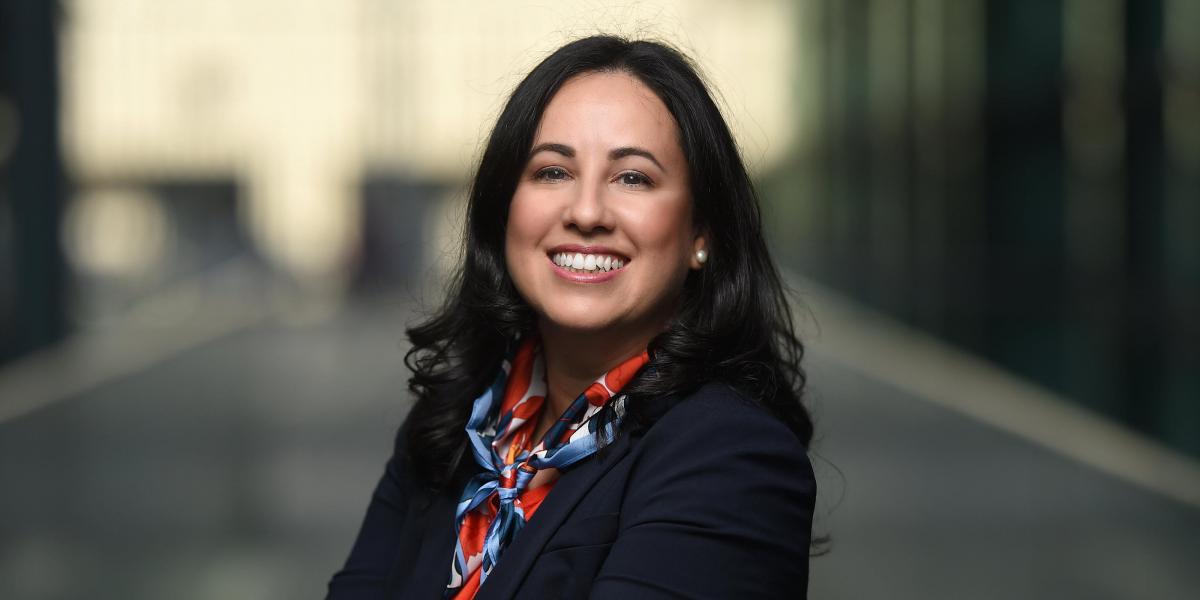
Carolyn Rodriguez, professor of psychiatry and behavioral sciences
“We need more research using the same rigorous methods applied to many other promising compounds for mental illnesses. By studying both efficacy and mechanisms, we can be more precise in developing better treatments with fewer side effects,” said Carolyn Rodriguez, a professor of psychiatry and behavioral sciences who co-authored a July 2022 position statement by the American Psychiatric Association on the mental health uses of psychedelics and empathogens.
Rodriguez, who directs the Stanford Translational Therapeutics Lab, is leading studies on the mechanisms underlying ketamine’s effects, a crucial component of her work on ketamine as a potential therapy for OCD. Previously, Rodriguez has demonstrated ketamine’s ability to reduce the compulsive behaviors characteristic of OCD. Her study on ketamine’s mechanism of action aims to better understand how ketamine helps OCD patients — one stepping stone toward a targeted OCD treatment.
Another key question is how these drugs change the brain itself to produce their unique mental states. Karl Deisseroth, the D. H. Chen Professor of bioengineering and of psychiatry and behavioral sciences at Stanford and a Howard Hughes Medical Institute investigator, has studied how ketamine alters brain dynamics to produce the characteristic “dissociative” state that appears to help some patients with depression and other disorders.
In a 2020 study, the Deisseroth lab linked these dissociative states to a specific rhythm of activity in particular circuits in the mouse brain. When the team artificially reproduced this rhythm in normal mice, they found they could directly trigger dissociation, even without ketamine.
Don’t trip? Or maybe do
Psychedelic therapy isn’t as simple as just taking a drug such as LSD, ketamine, or MDMA and waiting for your depression to go away. It unfolds over several preparatory sessions, each dedicated to pinning down how and when to enter the psychedelic experience. When the drug arrives, it’s accompanied by ambient music and a pair of eye shades. The patient pops the pill, sits back, and lets the drug get to work on their brain. Lastly comes the therapist-aided process of integration, where the patient takes what they’ve experienced and tries to fit it back into their life.
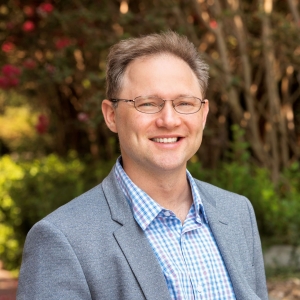
Boris Heifets, assistant professor of anesthesiology, perioperative and pain medicine
“It’s a big, holistic process,” said Boris Heifets, an anesthesiologist and neuroscientist at the Wu Tsai Neurosciences Institute who has previously worked alongside Malenka to study the mechanisms of MDMA. “These drugs are more like ‘catalysts’ than they are treatments.”
The downside of this holistic approach, according to Malenka, is that psychedelic therapy is hard to regulate. In part, this is because psychedelic therapy often requires far more oversight than traditional therapy. For instance, because psychedelic drugs put patients in an altered, vulnerable state, each individual is normally accompanied by at least one and often two therapists for the sake of safety. This makes psychedelic therapy not only expensive, but tricky to scale up.
“The FDA has never had to evaluate a treatment that involves both a drug treatment and a psychotherapeutic intervention,” Malenka said. “Everybody’s very interested in seeing how federal agencies and states regulate the distribution of these substances as therapeutics.”
The ideal psychedelic treatment would drastically streamline this therapeutic process, reducing psychedelic therapy to nothing more than a simple, safe-to-use pill. It’s a tremendously difficult — and thus far elusive — goal.
At the heart of the matter is the “trip,” or the acutely brain-altering experience that characterizes these psychedelic drugs. Many researchers think that the process of consciously undergoing this experience is deeply intertwined with the therapeutic properties of drugs like LSD and MDMA.
“There’s this suspicion that the therapeutic part might come from the process of mixing things up and jumbling your rigid way of thinking,” Heifets said. “You can call it a realignment of your values, or a perspective change.”
One example might be found in MDMA. Patients with PTSD typically experience intense anguish in response to trauma-related triggers, yet MDMA’s brain-altering properties reduce these fear barriers while also producing a shift in perspective: one that allows patients to confront their trauma while remaining grounded in the present. At the same time, MDMA’s ability to aid social interaction can greatly increase the emotional rapport between patient and therapist, further supporting the patient in working through their disorder.
But the question remains: do the clinical benefits of psychedelics always require patients to undergo these profound, and sometimes grueling, drug-induced experiences? It would certainly be much simpler for researchers — and speed the pace of progress for patients — if the benefits of psychedelics could be achieved without the trip.
Heifets, an anesthesiologist, has used general anesthesia to better investigate this question. By placing patients under anesthesia, he aims to test whether it’s possible to get the benefits of psychedelic drugs without actively experiencing the “trip” — suggesting that these drugs are operating on some deeper, more mechanistic level.
“What we’re studying is what would happen if we eliminated all external sensory input — if we made sure that patients were unaware of the drug’s effect on their brain by making them unconscious,” Heifets said. “Would we still get that therapeutic effect?”
Currently, researchers are working to develop this approach in ketamine trials, with the potential for future applications in other compounds. From what researchers have seen so far, however, there has not been compelling evidence that these drugs can work without the holistic process of preparation, “trip” and integration.
Still, a solution without the “trip” remains the white whale (something obsessively pursued but difficult to achieve) of psychedelic medicine.
“We’re talking about designing drugs that have the same therapeutic efficacy, without the possible side effects, without the potential for bad stuff to happen,” Malenka said. “If that’s possible, that would be wonderful.”
Want to understand addiction? Look to evolution
It might not be possible to get the therapeutic benefit without the “trip,” but it might be possible to get the “trip” without one of the key risks — namely, addiction.
Addiction is a particularly vexing problem in non-classical psychedelic drugs like MDMA and ketamine, which trigger the release of dopamine, the neurotransmitter linked to addictive behavior. But is this same addiction mechanism responsible for the drugs’ therapeutic benefit?
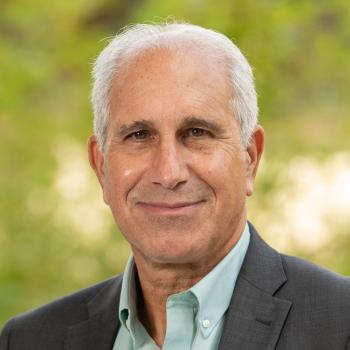
Robert Malenka, Nancy Friend Pritzker Professor of psychiatry and behavioral sciences
For Malenka, the key to understanding these drugs’ addictive potential lies in understanding the ancient circuits they alter. The pleasure of socializing with other human beings is a core drive for our species, burned into our neural circuitry by their evolutionary value to human survival.
“What in the brain tells us that a social interaction is fun and rewarding?” Malenka said. “Why is it that, for most people, it’s more fun to go out to dinner with friends than eat by yourself?”
The Malenka lab’s research explores how these mechanisms get hijacked by drugs of abuse, including potentially beneficial ones like MDMA. Researchers had already established that MDMA’s addictive potential came from its ability to stimulate the release of dopamine, a neurotransmitter involved in reward and motivation that plays a role in most forms of addiction. But in a series of studies, Malenka and Heifets — then a researcher in Malenka’s group — wanted to find out if MDMA’s therapeutic, empathy-boosting abilities might involve a different brain pathway, making it possible to separate out its positive effects from its abuse liability.
One leading possibility was the brain’s serotonin system, which can play a role in stabilizing feelings of well-being and happiness — the basis for MDMA’s therapeutic use. To test this question, the Malenka lab separately blocked MDMA’s ability to release either serotonin or dopamine in mice. Normally, MDMA dramatically boosts rodents’ social drives, much like in humans. But inhibiting serotonin prevented this effect — strong evidence for a link between this neurotransmitter and the drug’s prosocial effects. In contrast, inhibiting dopamine had virtually no influence on animals’ sociability.
“This was compelling evidence that it might be possible to design a version of MDMA that elevates sociability through the serotonin system while greatly reducing or eliminating the regular drug’s addictive downsides,” Malenka said.
This mechanistic separation between therapeutics and abuse might not be possible in all drugs, however. While scientists are still working on these varied psychedelic compounds, the risk looms that abuse potential might come as an inseparable side effect of treatment.
“It’s hard to make categorical statements about abuse liability,” Heifets said. “Every drug is different, so at least when it comes to addiction, you have to talk about each like its own animal.”
The future of psychedelic treatment
With the field of psychedelics booming, researchers are operating in a high-stakes environment. On the one hand, it’s never been a better time to study these compounds: the Food and Drug Administration (FDA) has indicated their intent to approve both MDMA and psilocybin as mental health treatments in the next two years, according to a federal letter made public only weeks ago. Yet others fear that the excitement surrounding these compounds has gone too far, and that these potential treatments might be more hype than substance.
The obstacles are clear. According to Malenka, the risk that widespread medical legalization of these substances might lead to rampant misuse, could threaten the future of psychedelic medicine altogether.
“As soon as something bad happens, the pendulum will swing the other way,” he said. “We don’t want to return to the early 70s, where some individuals and communities used these substances inappropriately and bad things happened.”
It remains to be seen how regulators will scale up and facilitate this pipeline from lab breakthrough to mainstream treatment. But many researchers are excited to get their hands on a new set of tools to help treat mental disorders that have long resisted conventional forms of treatment. If these drugs deliver on their promised benefit, a new era for psychiatric medicine might be at hand — and all it took was for us to finally open our minds to the possibilities.
